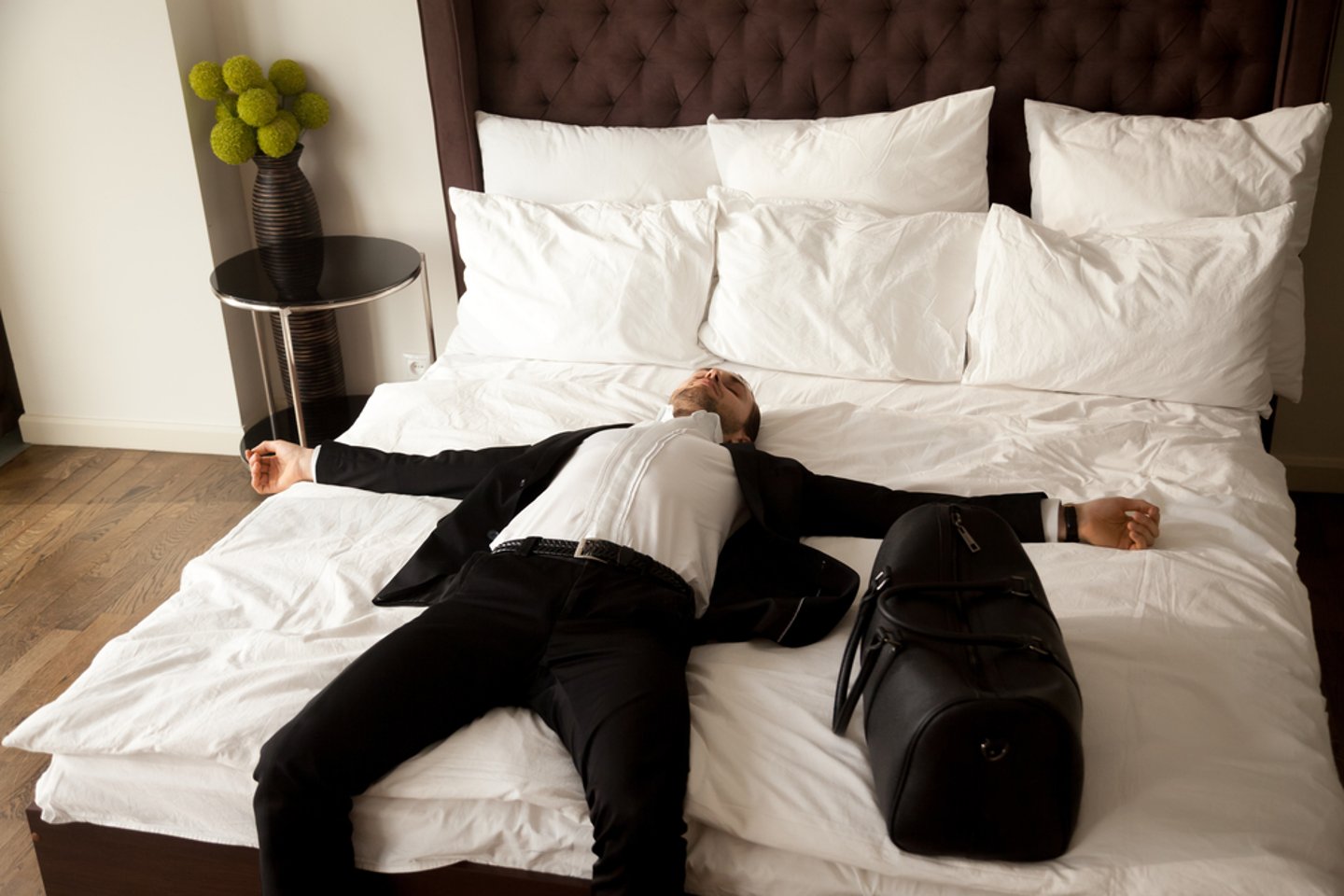4 Hotel Technologies to Help Guests Have Sweet Dreams
Scroll through online hotel listings and you’ll find a consistent emphasis on amenities such as swimming pools, fitness and business centers, breakfast and restaurant offerings, and premium TV channels. While coastal or mountain wellness resorts offer services and activities well beyond such mainstays, what still often goes unmentioned is the eternal truth that the main purpose of a hotel is to offer its guests, a good place to sleep.
Yet sleep can be hard to come by in a hotel. An IHG Hotels & Resorts study found that 79% of business travelers have trouble sleeping when they’re on the road. Being in an new space and hearing unfamiliar sounds weighed heavily among the reasons why. While it may be that vacationers less stressed about morning meetings do better, in my own experience – and, probably, yours – sleep can suffer when you’re away from home.
The downsides of sleep deprivation are, of course, well documented. Besides the short-term lack of alertness and mental and physical sluggishness, the list of sleep-deprivation problems includes high blood pressure, diabetes, heart problems, obesity, depression, and diminished immune-system function and sex drive.
Understandably, then, sleep is becoming a new hospitality-industry wellness category, and hence the emergence of pillow menus, weighted blankets, blackout curtains, and even dedicated sleep experts. What’s also emerging are technologies designed to improve the sleep of hotel guests. Here are four of my favorites.
The Smartest Bed
There’s more to a solid night’s sleep than a good bed, but beds do matter – hence the upgrading that’s been an industry focus for more than a decade now. The Restorative Bed by Bryte represents the apotheosis of this trend. The Bryte bed has found adherents in the rooms of luxury and wellness hotels including the Fairmont Scottsdale Princess, the Park Hyatt in New York City, the London West Hollywood, the Carillon Miami Wellness Resort, and others, with the Four Seasons Hotel in Los Angeles and the Little Nell in Aspen on tap.
What attracted these marquee names is a product that makes Sleep Number-type beds look like camping mattresses. At the base of the Bryte bed is an artificial-intelligence-enhanced control system that adjusts the bed’s 100 coils for pressure and support while the guest sleeps. The idea is to relieve pressure points before the discomfort that results wakes you up – a problem even with mattresses that conform to body shape. In addition, the Restorative Bed has a climate-control system with separate zones for each sleeper. It cools and heats depending on sleep stages it determines based on heart rate, breathing patterns, body temperature, and more, all of which the bed tracks – and which guests review on the bed’s accompanying tablet-based app. The bed even learns a user’s sleep preferences, creating a personalized profile that can be transferred to other Bryte beds.
Breathe (and sleep) easier
Altitude hampers sleep and, for many, causes mountain sickness characterized by fatigue, headache, and other symptoms. A lack of oxygen is the problem (at 8,000 feet, there’s 24% less of it than at sea level). Colorado-based Altitude Control Technology – the company I lead – has turned a historic niche in high-altitude simulation on its head for hundreds of mountain homeowners. Now, ACT has expanded to incorporate oxygenation into hotels.
Whether implemented hotel-wide or just in a few guest rooms, guests use a touchscreen to set a preferred simulated altitude (typically at 1,500 feet or below) or duration of enhanced oxygenation. The system manages and monitors not only oxygen, but also carbon dioxide and barometric pressure so guests can sleep easier, avoid mountain sickness, and enjoy their time on the slopes, trails and other activities.
No blue
When it comes to sleeping, light matters – in particular, blue light. These short wavelengths in particular influence our production of melatonin, a hormone that helps regulate sleep. Generally, the last place you want a lot of blue light is in a hotel room. Yet most energy-efficient LEDs kick out a lot of it. There are a couple of ways around this.
One would be to follow the Crowne Plaza Atlanta Airport’s example and invest in Healthe’s Journi Mobile Task Light in guest rooms as bedside lamps. For those looking to take even more blue out of the room, consider Soraa Healthy “zero blue” bulbs. These lamps come in various shapes and sizes, and, Soraa says, produce 40% less melatonin-generating light than conventional LEDs – without the yellow cast of other sleep-friendly bulbs.
Quiet, please
The best way to ensure sleep-friendly quiet in a hotel is to invest in soundproofing during construction and interior design (there’s a lot to consider on that front). After that, the best bet is sound masking.
This involves the creation of white noise that overlaps with human-voice (and by extension TV-voice) frequencies. This can be done with systems integrated into the hotel room’s ceiling – that’s the approach of Cambridge Sound, whose primary niche is office environments – or with smaller standalone systems.
If less comprehensive, the latter represents a more cost-effective approach. While there are dozens of white-noise emitters on the market (not to mention scores of iPhone and Android apps), a couple of options stand out. One is the LectoFan Evo, which boasts several different electronically generated white-noise options) and is the choice of the Renaissance Denver Central Park Hotel. Another is the Yogasleep Dohm, which emits noise from an actual fan and has found fans of a different sort in Four Seasons and Hyatt hotel rooms.
When it comes to sleep, there may be no place like home. But these technologies can help your guests rest easier.

